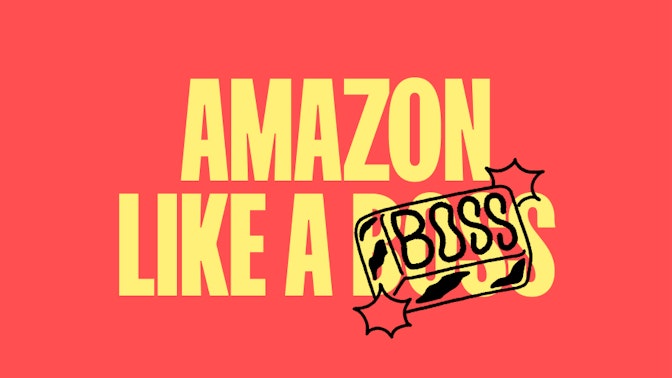One of the greatest things about building a Shopify store is that there are a lot of automated parts that help make running an online store a little bit easier. On Shopify, automation can include abandoned cart emails, order processing with certain apps, and email forwarding. On Oberlo, in only one click, a product gets added to your Import List. But when you’re on the prowl for trending products to sell, those little one clicks can add up really fast.
And next thing you know…. BAM! There are 423 products hanging out in your Oberlo Import List. Or at least there are 423 hanging out in my Import List.
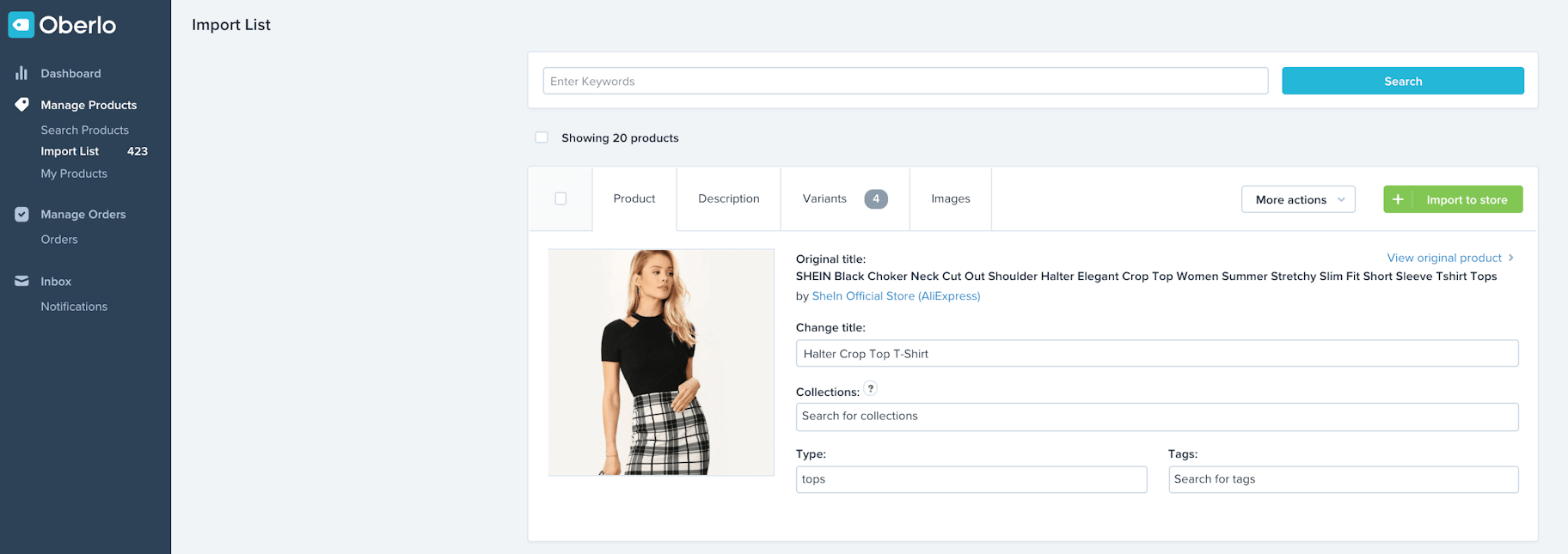
So now you have to not only write to product descriptions, but also choose variants, collections, and photos.
Now, if running online stores is your full-time job, finding time to do this is no problem. This is your main gig.
But what about the folks who aren’t doing this full-time? How do you get all these product descriptions up and market your store at the same time? Could this be the reason why some people spend months without a single sale?
I needed to figure out a solution to help prevent others from feeling overwhelmed while also finding a formula that works.
The Problem
The biggest challenge, aside from time management, is that feeling that you don’t know which of the products you added will be your winning product.
While you were researching, you might’ve been looking through order volume, checked out lists of best-selling dropshipping products, and added products you thought looked interesting.
So, when you look at this daunting list of 423 products, you can’t remember why you added each one. There are just too many. And this confusion might frustrate you enough that you second guess whether or not you’re cut out to do this in the first place.
You can’t help but wonder how you got you to this point in the first place.
I was so overwhelmed by the number of products in my Import List that it took me two months to gain the confidence to tackle it again. And I’ve run lots of online stores.
So if you’re currently struggling with anxiety, frustration, or overwhelming feelings, you’re not alone.
But ultimately, it’s important to remember that building an online store is what you want to do. And it’ll help you achieve so many important goals like getting out of debt, earn passive income online, build an asset you can call your own, and quit that job you hate so much.
After all, it’s important to remember that the high workload of running a business is temporary. Eventually, as your business grows, you’ll be able to build out your team of freelancers or maybe even full-time employees to help you continue growth.
But first things first: Let’s sort out that Import List.



The Solution
I’ll break down a few of the solutions that will help you while you work on your online store.
The All-At-Once Approach
If you want to have a full-fledged online store with hundreds of products at launch, you can pause your Shopify store after your free trial, which will allow you to have a store but at a more affordable price point. For only $14 a month, your Shopify store will be paused, which means your website will be live but customers won’t be able to use the checkout process.
For example, you can add new blog posts for people to view so you can grow your website traffic and begin building an audience. Or you can continue to password protect your store while you add products in the backend until your store is ready for its grand debut. Tada!
→ Click Here to Launch Your Online Business with Shopify
With the $14 plan, you can write product descriptions at your own pace during evenings and weekends. Without stressing too much about the cost. A little tidbit you’ll want to keep in mind is that you should remove Shopify Apps at this time. The costs of Shopify Apps can really add up fast. If you aren’t selling yet, you won’t need many apps in the early stages.
When it comes to Oberlo, you can add up to 500 products to your store on the free Starter Plan. So as long as the number of products is below that number, you won’t need to change a thing. And with that plan, you’ll be able to have an unlimited number of monthly orders and some cool features like the Oberlo Chrome extension, automated pricing, and more.
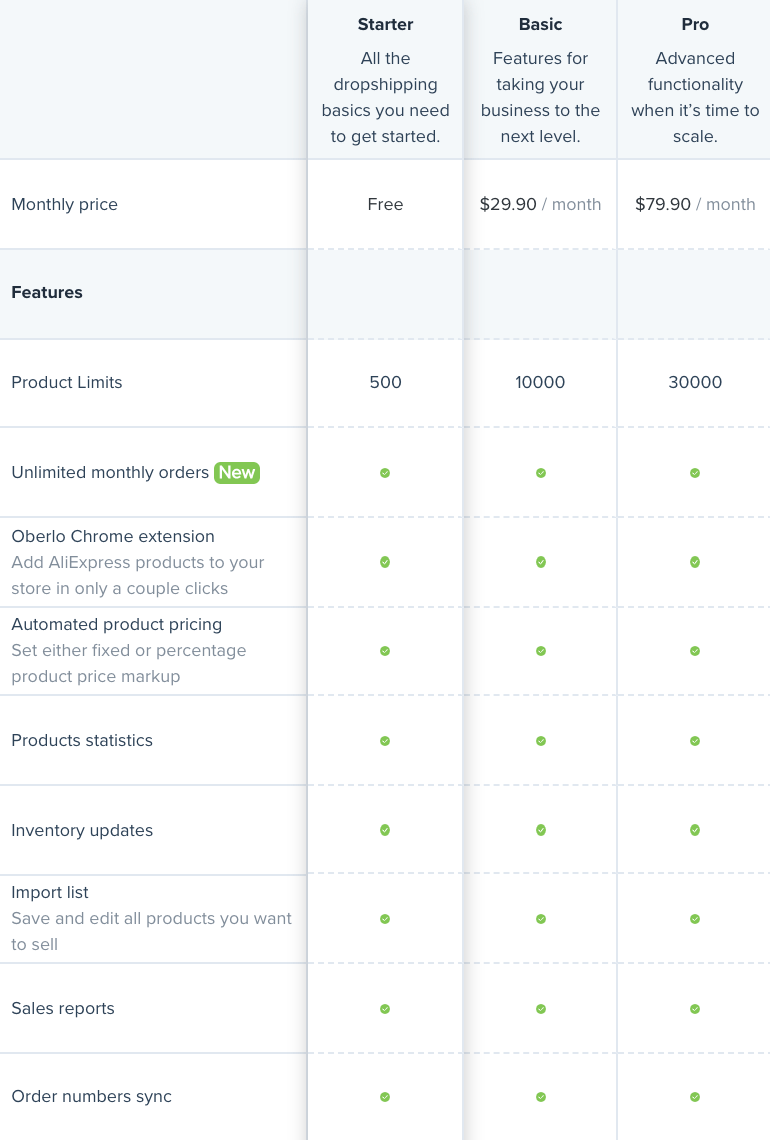
The Vacation Approach
When you work a 9 to 5 job, you might dream of your beach vacation with an ice cold drink in your hand while relaxing in the sun. But entrepreneurs can make that beach vacation happen a little more frequently. A good way to help make that happen dream a reality is to take a vacation to invest in your business.

The week before your workcation, you need to plan out what you want to accomplish so you can complete everything you set out to do that week. Here are a few things you might want to complete during your week away from your day gig:
- Write product descriptions for all products on your website
- Clean up the look of your store (editing images, designing logo, adding web pages)
- Ask for a store review from a Shopify or Oberlo guru
- Start adding products to your Pinterest for early marketing
- Experiment with Facebook Ads
- Post product images to Instagram
- Use a free scheduling tool to automate your social media posting
The focus of the workcation should be to get your store to the point of making your first few sales. From writing product descriptions to promoting your website for the first time so you can hear the coveted cha-ching.
The One-to-One Model
The one to one model is what I do when I find myself struggling to push through barriers.
For this approach, you’ll only pick one product starting, with the one on top. Then, you’ll complete all the details such as choosing a collection, writing a product description, and so forth.
If you struggle to write product descriptions, you can simply use a bulleted list to help ensure customers get all the product details they need for their store.
If you’d prefer to write something up but your native English could use some work, you can use a tool like Grammarly to make sure that your spelling and grammar are accurate. Plus, you don’t need to write a lot. Most of the time, I only write two sentences and the rest is a bulleted list.
After you’ve finished the process for one product, you push the product to Shopify. And now you’ve just added your first product to your store.
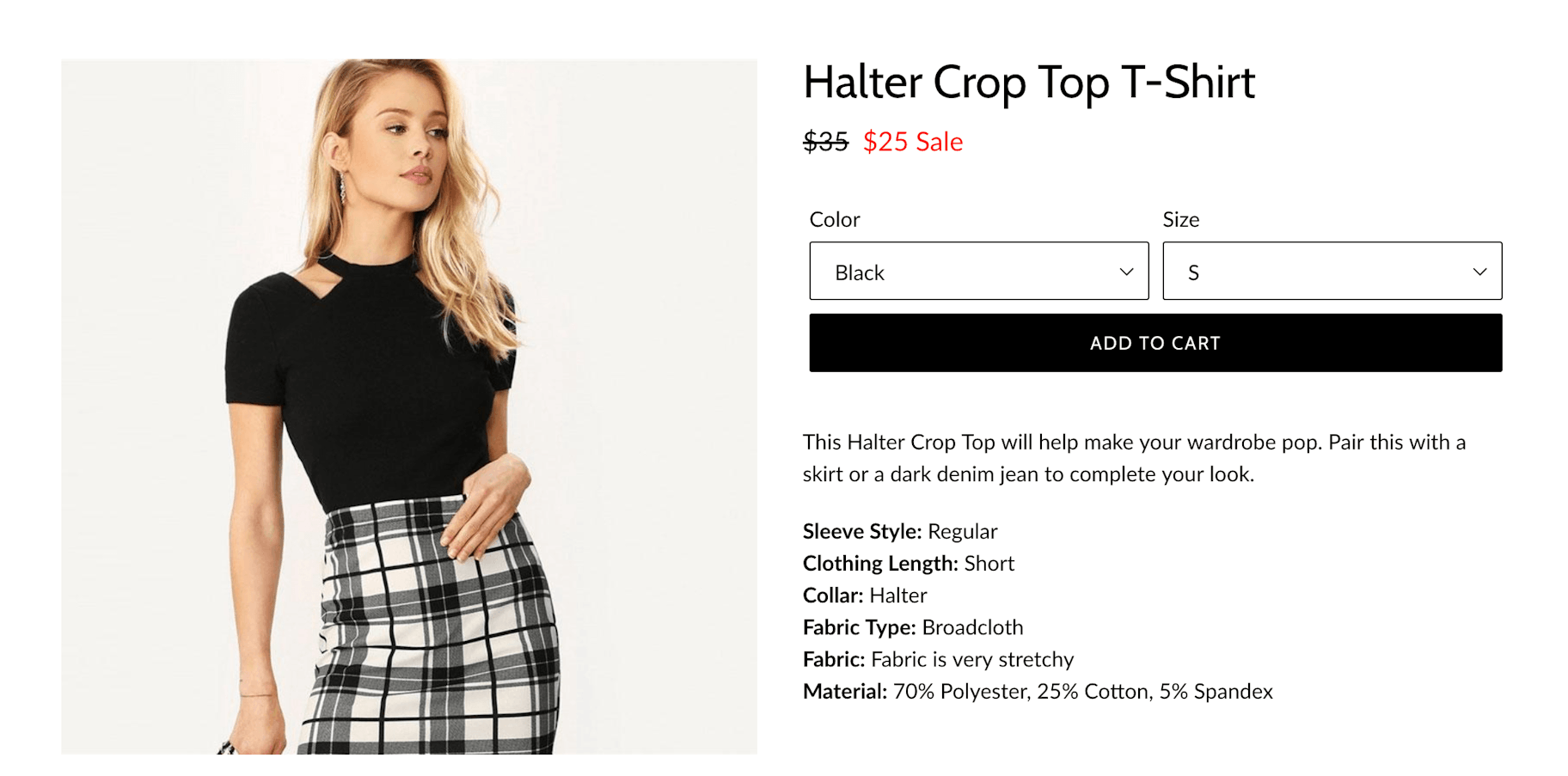
However, instead of diving into the next product description, you focus on marketing that first product.
So what I’ll do is add the product to my Pinterest, post it on Instagram, create my first ad, and get the ball rolling. For me, marketing is the fun part. So by teasing myself with it, it’s always helped me stay motivated.
After I’ve finished marketing that first product, I head back to Oberlo to add the second product on the list.
So you’ve probably noticed this is the slow and steady approach to pushing products to your store. As you start to add products and market them, you begin to have more fun with it.
I basically use this formula when I’m in a bit of a rut or when I feel overwhelmed. It’s an easy short-term solution to break down the process and remember why you started in the first place.
The Hand-Picked Process
After adding hundreds of products to my Import List, I sometimes begin the process of removing products to make the list a little bit smaller. I have a set number of criteria that I like to follow to help me include only the best content on my website. Here are a few:
- The product photo looks like a professional photo instead of a selfie or mirror photo
- There are no logos that can’t be Photoshopped out (i.e., not partially on the model’s face or on the product)
- The product must match the exact audience of who you’re trying to target on your overall website
- Photos must maintain a similar look (if most pictures show a model’s face, then you shouldn’t have one where the face is cut out of the photo)
- If the product mentions a year, only add products from the current year to stay up to date with trends. You can search by keyword such as “2017” to find products with the year in it to delete
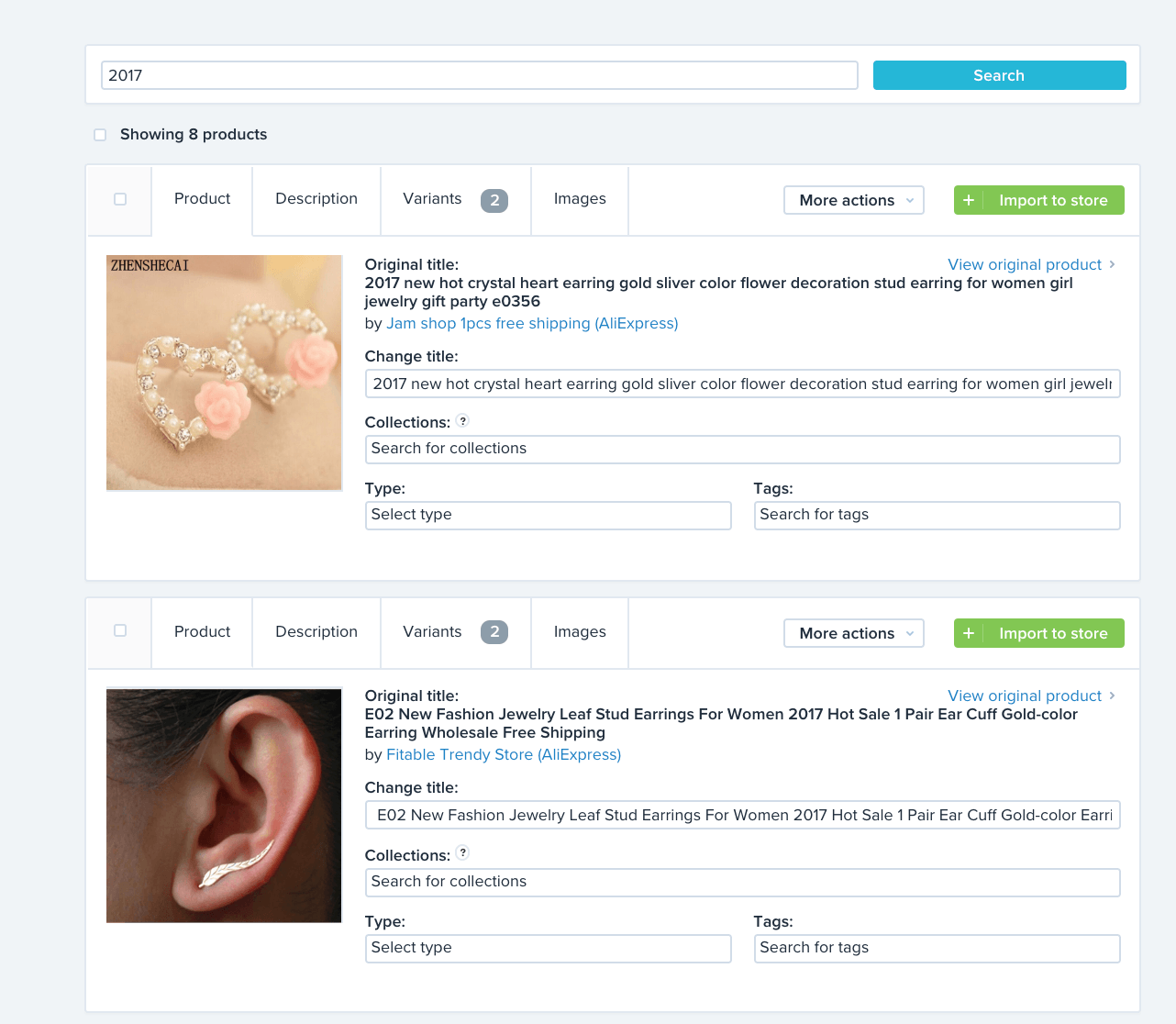
You might have your own set of rules which will help you stay laser-focused on what type of products you really want to have on your store. Some things you might look at:
- Photo consistency
- Order volume in past 30 days vs six months
- Age of product (2017 vs 2019)
- Product niche
Another option for the hand-picked model could be you choosing the top 25 products that you want to add to your store. On average, 25 is a great number of products to help your store have some variety.
By narrowing the focus to 25 products, you can focus on testing this small batch of products with concentrated effort. If none of the products you’ve chosen end up being the winning product, you can add another 10-25 products and continue with the process again until you’ve hit the sales sweet spot.
Sometimes, depending on the product, your store can have only one product that works as the runaway hit. This might be a product like a laser hair removal tool, teeth whitening, or an anti-snoring device. Each of these products can work well on their own standalone store. However, avoid having a brand name that includes the name of the product because eventually trends change and you’ll want to pivot.
Ultimately, it’s important to remember that the number of products doesn’t matter. As long as you have a winning product on your store, you can still build a six- or seven-figure business with that one product. The secret to success lies in your ability to test products until you find it, and then scale your marketing when you do.



Conclusion
Finding the time to manage your business while working a 9 to 5 job can be a little tricky. I know it feels a little overwhelming, especially if it’s your first time building an online store. Just know that whether you slowly chip away at it, pause your store, take a workcation, or trim your product list manually, the reality is that as long as you stick with it, you will complete your store.
The process of building your online store is just that – a process. But there’s a lot of fun to be had after you finally launch. From creating your first Facebook ad to getting your first sale. Don’t get too caught up in the workload. There are ways to minimize your workload so you can get down to business. The store set up process is only one small part of your journey as an entrepreneur. Once that’s done, it’s time to get ready for take off.
Want to Learn More?
- 16 Dropshipping Tips for New Entrepreneurs
- 10 Dropshipping Myths That Need to Be Debunked
- Biggest Dropshipping Niches in the Biggest Markets
- 12 Things I Wish I Knew When I Started Dropshipping

